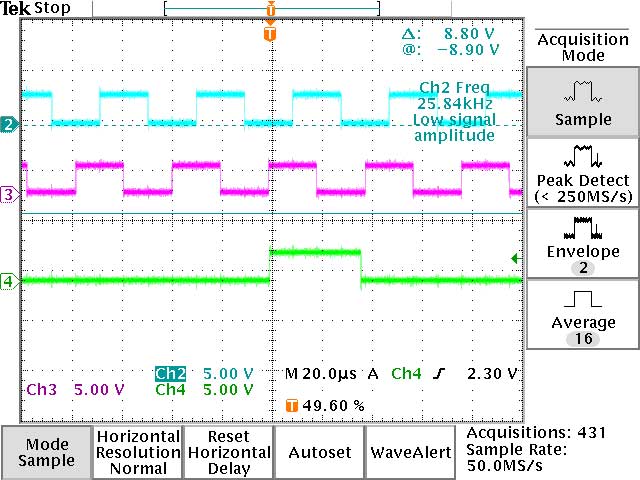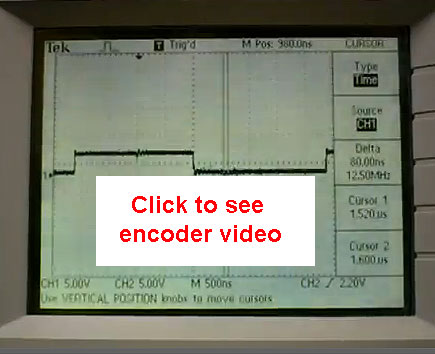Finding the RPM of an Optical Encoder using an Oscilloscope
January 9, 2016
We only need to measure one of the incremental channels in order to calculate the RPM of an optical encoder. Using an oscilloscope to measure the period of one incremental channel A cycle.
We will need to find the frequency of the incremental signal. Keep in mind that converting from time to frequency is just a simple press of the “one over X” button on a scientific calculator.
Frequency =(1/X time)
Time = (1/X Frequency)
To find RPM Once you have the frequency, Multiply by sixty and divide by the line count.
RPM = (Frequency X 60)/Line count of encoder
The encoder in the video is a 5000 Line Count encoder. Channel A is outputting pulses at a frequency of 224.2 Khz
RPM = (224.2Khz X 60)/5000
RPM = (13452000)/5000
RPM = 2690.4 RPM
I often use this method to either verify the speed of a motor controller I have built, or if I know the RPM of the motor, I will sometimes use this as a quick way to verify the line count of an encoder.
You can also use our handy web-based optical encoder calculator as well.
Jim
Related article: Encoder vs Potentiometer



